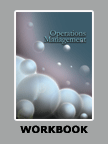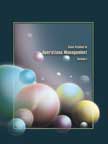The AXA Way: Improving Quality of Services




|
|
ICMR HOME | Case Studies Collection
Case Details:
Case Code : OPER058
Case Length : 17 Pages
Period : 1997-2006
Organization : AXA
Pub Date : 2006
Teaching Note :Not Available
Countries : France
Industry : Financial Services
To download The AXA Way: Improving Quality of Services case study
(Case Code: OPER058) click on the button below, and select the case from the list of available cases:

Price:
For delivery in electronic format: Rs. 300;
For delivery through courier (within India): Rs. 300 + Rs. 25 for Shipping & Handling Charges
» Operations Case Studies
» Case Studies Collection
» ICMR HOME
» View Detailed Pricing Info
» How To Order This Case
» Business Case Studies
» Case Studies by Area
» Case Studies by Industry
» Case Studies by Company
Please note:
This case study was compiled from published sources, and is intended to be used as a basis for class discussion. It is not intended to illustrate either effective or ineffective handling of a management situation. Nor is it a primary information source.
|
|
<< Previous
"If you want to innovate, you must always do so in a
cost-effective, predictable way, and for that you must master your processes.
Excellent manufacturers know how to do this. We will, too"1
- Claude Brunet, Member, AXA Management Board in 2005.
"This (AXA Way) is a powerful tool that harnesses all of
the internal energies we have to mobilize in order to step up the pace of our
quest for operational excellence."2
- Henri de Castries, Chairman, Management Board, AXA Group
in 2003.
Improving Customer Satisfaction
|
France based insurance and investment management conglomerate; AXA Group3's
operations were spread across the world. In the year 2001, the company's German
operations had some difficulty in retaining customers.
The company conducted a survey and found that although most customers wanted to
obtain accurate information about the loss and claims processes, in writing,
only 22% of the company's customers were actually receiving such information.
The customers also expected to receive such information within the span of one
week. However, in most cases, AXA Germany was unable to provide the information
in the specified time frame.
|
|
The main reason was that the processing of claims in the company was geared to
the needs and ease of operations of those working in the company, rather
than the needs and preferences of the customers. To overcome this problem, a
team from the company took feedback from customers on claims-related
services being provided to them. Having understood their requirements, the
team devised a specimen letter, which informed the customers about how their
claim was being settled, the details of the employee from AXA who was
looking into the matter and how to go about settling their claims.
|
|
Letters on these lines were, from then on, dispatched to all the customers
who filed for claims.
The result of these efforts was instantaneous. The number of calls the
customer service center received about claims-related information reduced by
half. The retention rate increased, and customers came back to AXA. The
change in the company's outlook towards its customers could be attributed to
'the AXA Way,' a continuous improvement program launched by AXA in 2002, to
achieve operational excellence and bring about changes in its business
processes based on customer feedback. |
The AXA Way: Improving Quality of Services
- Next Page>>
|
|



